Animals are dependent on nature for survival and evolution. The process of evolution becomes unique when there are various factors such as geography, habitat and environment affecting the growth and development of a specie. This is the reason why there are many sub-species that are covered under a generic umbrella even though they are scattered around the globe and called by different names in different areas. The modification in DNA structure is largely dependent on the food they eat and the kind of environment they live in and those factors can completely change a species of animal so much that they develop specific characteristics depending on the area they inhabit.
For instance, elk live in North America, Asia, and Australia among other places. However, an elk living in North America is very much different form the ones living in the arctic region. There are many animals that are exclusive to certain areas around the globe. The following article looks at animals native to the continent of North America. From reptiles to mammals to insects, these animals call North America their home.
#10: American Alligator

©iStock.com/Bradley Proxmire
This North American native lives in the southwestern United States. Specifically, they live in freshwater swamps, marshes, lakes, and rivers in Florida, Georgia, Alabama, Mississippi, Louisiana, and Texas. These gators can grow to a length of 16.5 feet from snout to tail. The largest one was recorded at an astounding 19 feet, two inches!
American alligators survive on a diet of fish, frogs, birds, and small mammals. Males sometimes growl or make a bellowing sound to attract female alligators or designate their territory. This reptile has a conservation listing of Least Concern.
#9: Groundhog
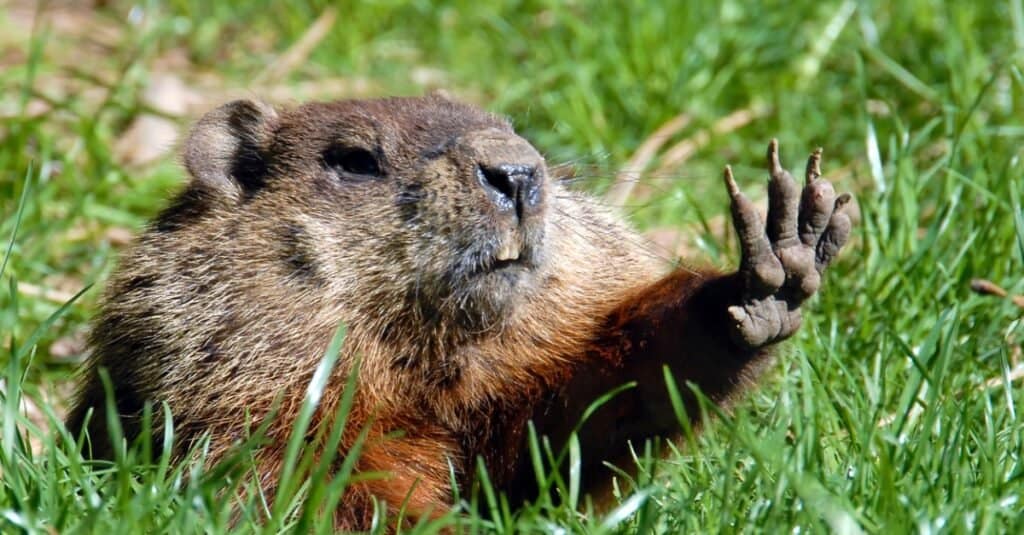
©iStock.com/mirecca
Did you know this native of North America is a member of the squirrel family? It is! It’s the largest member of the squirrel family weighing up to 13 pounds with a body as long as two feet. Don’t forget it has a tail measuring seven to ten inches.
The range of the groundhog starts in Canada and extends down ending in the southern portion of the United States. They live in forests where they dig burrows that contain various levels and rooms along with several entrances and exits. This large squirrel, also called a woodchuck, even has its day on the calendar. The celebration takes place every year in Punxsutawney, Pennsylvania in the United States. On February 2nd, a groundhog named Punxsutawney Phil predicts when spring will arrive!
#8: Gila Monster

©iStock.com/kwiktor
This reptile is native to the southwestern part of the United States including Arizona and New Mexico. It is named after the Gila River Basin in their southwestern home. Its bumpy black skin featuring pink or yellow splotches makes this lizard hard to overlook! Their total length from snout to tail can add up to just under two feet.
Though Gila monsters are venomous and can have a painful bite, they are shy and spend the bulk of their time in burrows keeping cool in their desert habitat. They emerge for short periods to look for prey including baby rabbits, birds, and birds’ eggs. These reptiles carry a conservation status of Near Threatened due to habitat loss and poaching. Some people even try to capture them to keep them as pets.
#7: Luna Moth
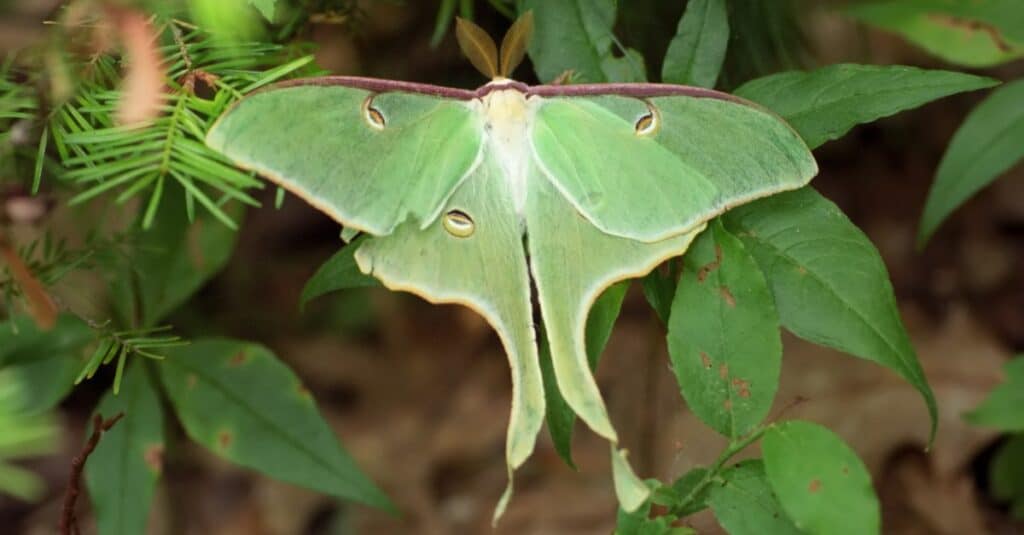
©iStock.com/ArendTrent
The Luna moth also called the moon moth is unique in many ways. For one, it’s unique to North America. Its range includes forests in southeastern Canada and the eastern United States extending from Florida up to Maine. They are abundant in the state of South Carolina.
Another thing that makes this moth unique is its appearance. It has a wingspan of three to four and a half inches as well as long tails on its lower wings. Also, it is pale green to yellow with eyespots that can be a mixture of black, brown, blue, and red. The eyespots are not only pretty to look at, but they also serve as a defense against predators. When a predator sees the large eyespots on the Luna moth’s wings it thinks it’s dealing with a large animal instead of a relatively small moth.
#6: Hawaiian Monk Seal
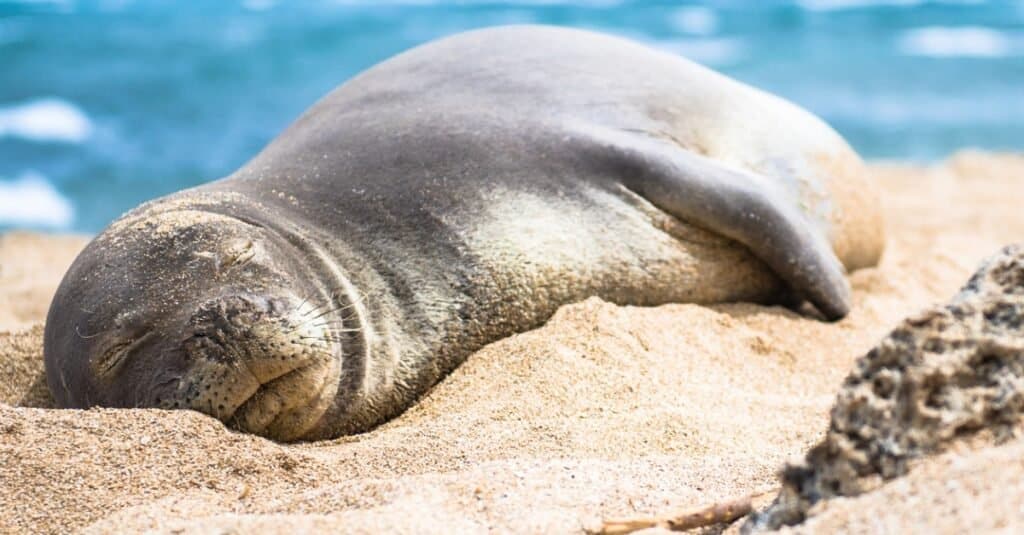
©greghonda/Shutterstock.com
The Hawaiian Monk seal is unique to the northwestern Hawaiian Islands. This seal weighs from 300 to 600 pounds and can grow as long as eight feet. Though they can be seen lying on beaches to sun themselves, they swim in the ocean most of the time. These seals live on a diet of fish, eels, and squid.
There are less than 1,000 of these North American natives left in existence. It is considered Endangered with a decreasing population. This wildlife is threatened by the loss of its habitat. Also, these unique seals are prone to get caught in commercial fishing nets that are set for other types of fish and sea life. Seals that become entangled in commercial fishing nets usually die as a result.
#5: Black-Footed Ferret
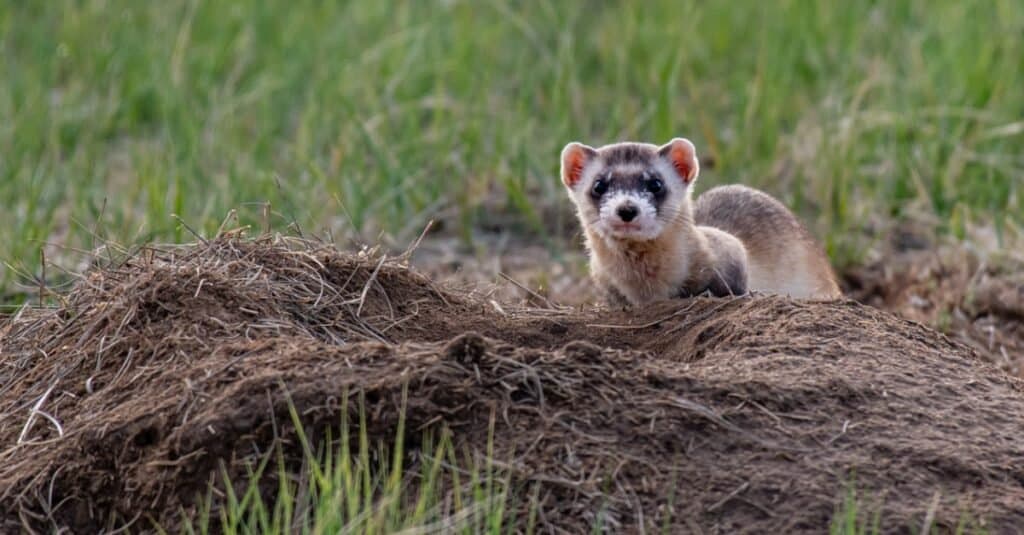
©iStock.com/Kerry Hargrove
These animals are the only ferret species unique to North America. They live in Canada, the southwestern portion of the United States, and down into Mexico. These ferrets live in burrows in a grassland habitat. They also live in abandoned prairie dog burrows. This is convenient because they eat prairie dogs. Prairie dogs are the main element in their diet.
A black-footed ferret has a slender body covered in cream-colored fur with black on its back, legs, and the tip of its tail. Of course, it has four black feet. It also has a partial black mask that makes it look a little like a raccoon! Its small ears stand up on both sides of its head. Adult black-footed ferrets can be two feet long with a weight of up to two and a half pounds. They are solidly built to move through their burrows with ease.
Unfortunately, these nocturnal mammals are considered Endangered and have a decreasing population. When prairie dogs began to be exterminated as pests, that took away the black-footed ferret’s main source of food. They are also experiencing the loss of their grassland habitat.
#4: Pronghorn

©BGSmith/Shutterstock.com
Pronghorn are wildlife native to North America specifically Canada, the central and western parts of the United States, and Mexico. They live in deserts, plains, and grasslands. Their reddish-brown coat and horns make them look like antelopes. They are sometimes called American Antelopes. However, they’re not true antelopes. Antelopes and pronghorn belong to two different families.
Both male and female adult pronghorn weigh around 100 pounds. They both grow to a height of 35 to 40 inches at the shoulder. Pronghorn can run through their grassland habitat at speeds of 50mph! These mammals have a conservation listing of Least Concern with a stable population.
#3: American Bison
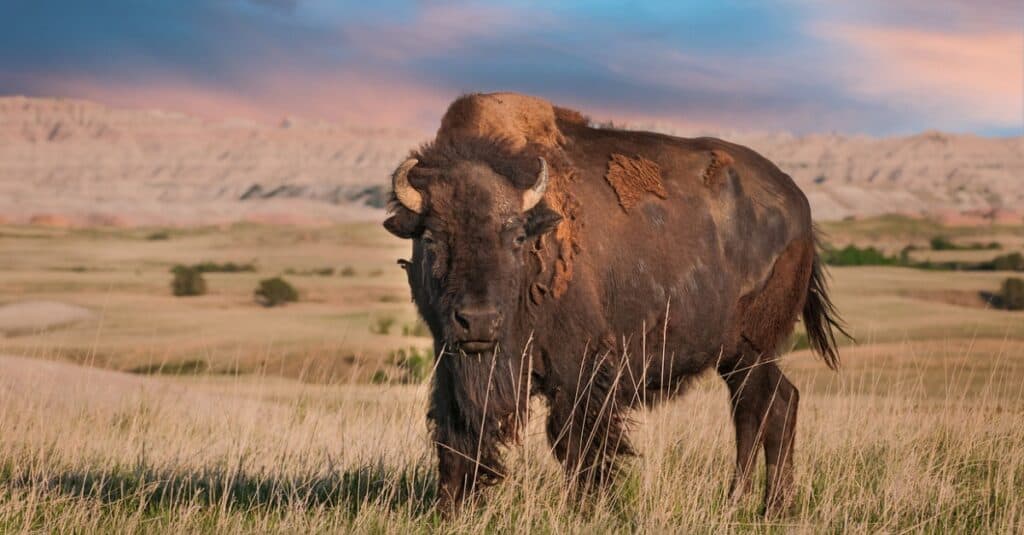
©Geoffrey Kuchera/Shutterstock.com
American Bison are unique to Canada and the western portion of the United States. There is a large population of them in Yellowstone National Park. The hump on the back of this animal is one of its many notable features.
These bison have short, curved horns along with a thick coat of dark brown fur. An adult American bison can reach a height of six and a half feet from the top of its hump to its hooves. Furthermore, they can measure 12.5 feet in length. No wonder it’s the largest mammal in North America!
#2: American Black Bear
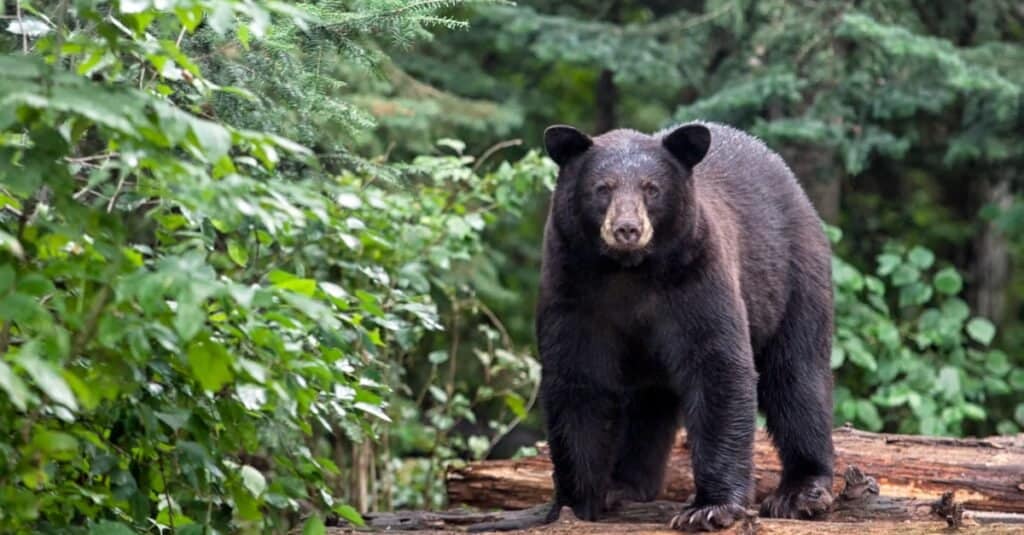
©iStock.com/Lynn_Bystrom
The American black bear is a must-have on any list of wildlife native to North America. They live in Canada and throughout the United States in forested areas. Idaho, Oregon, California, and Washington State all have especially large populations of American black bears.
While many American black bears have black fur some have a brown coat or even fur the color of cinnamon. They are around six feet long and weigh from 200 to 600 pounds. American black bears have short claws that help them to climb trees. They can run at a speed of 40mph. Looking at their conservation status, they have an increasing population and are listed as Least Concern.
#1: Bald Eagle
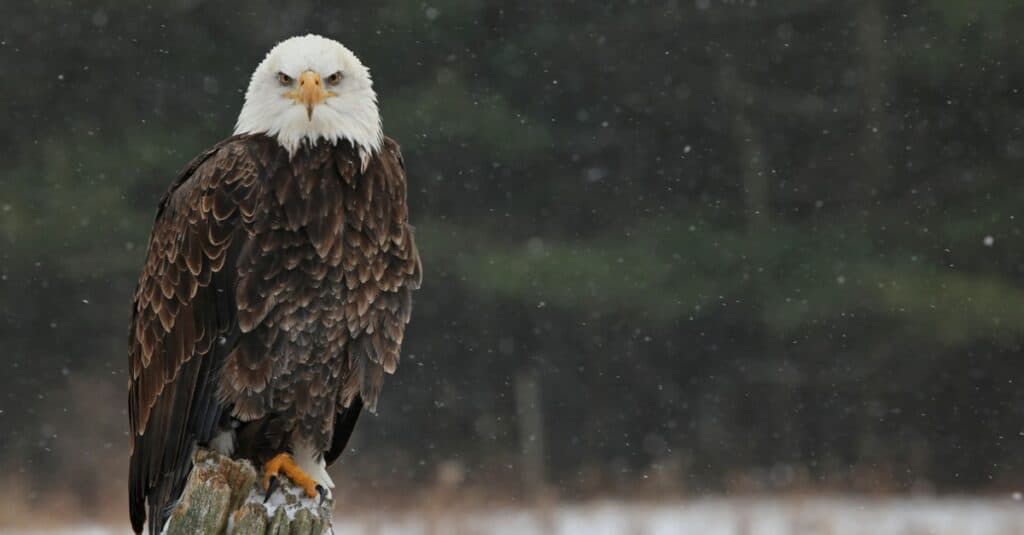
©iStock.com/ca2hill
Since 1782, the bald eagle has been the symbol of the United States. So, it’s not surprising that this bird is unique to North America. They live in areas all over the United States and Canada as well. Their territory even stretches into Mexico. Bald eagles have a forest habitat and usually make their home near a body of water where they can hunt for fish, snakes, and frogs.
This eagle is easy to recognize with its head of pure white feathers, the dark brown feathers on its body, and bright yellow beak. It has a wingspan of up to seven feet! They can glide effortlessly through the air while looking for prey from great heights. Their conservation listing as Least Concern, and these birds have a population that’s growing.
Summary
Here are our top picks for animals that are unique to North America
| Rank | Animal Name |
|---|---|
| 1 | Bald Eagle |
| 2 | American Black Bear |
| 3 | American Bison |
| 4 | Pronghorn |
| 5 | Black-Footed Ferret |
| 6 | Hawaiian Monk Seal |
| 7 | Luna Moth |
| 8 | Gila Monster |
| 9 | Groundhog |
| 10 | American Alligator |
Next Up…
- The 8 Weirdest Birds in the World: If you are fond of the bizarre, find out the what the most weirdest birds in nature look like.
- The 10 Largest Rainforests in the World: If you are a nature lover, then there is nothing better for you than rainforests. Find out which are the largest rainforests in the world.
- Discover the Unique Animal that Can Survive 80 Rattlesnake Bites!: Surviving a venomous snakebite that can fell a human is no small feat. Find out which animal can survive even after being bitten 80 times!
The photo featured at the top of this post is © iStock.com/R Lolli Morrow
Thank you for reading! Have some feedback for us? Contact the AZ Animals editorial team.







